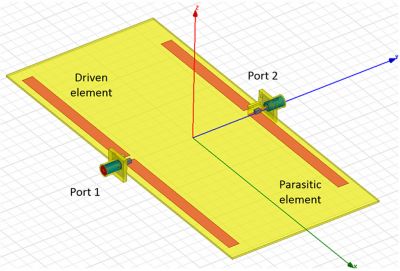-
-
Kostenlose Software für Studierende
Ansys unterstützt die nächste Generation von Ingenieur*innen
Studenten erhalten kostenlosen Zugang zu erstklassiger Simulationssoftware.
-
Verbinden Sie sich jetzt mit Ansys!
Gestalten Sie Ihre Zukunft
Stellen Sie eine Verbindung mit Ansys her, um zu erfahren, wie Simulation Ihren nächsten Durchbruch vorantreiben kann.
Länder und Regionen
Kostenlose Demoversionen
Produkte & Dienstleistungen
Lernportal
Über das Unternehmen
Back
Produkte & Dienstleistungen
Back
Lernportal
Ansys unterstützt die nächste Generation von Ingenieur*innen
Studenten erhalten kostenlosen Zugang zu erstklassiger Simulationssoftware.
Back
Über das Unternehmen
Gestalten Sie Ihre Zukunft
Stellen Sie eine Verbindung mit Ansys her, um zu erfahren, wie Simulation Ihren nächsten Durchbruch vorantreiben kann.
Kostenlose Demoversionen
ANSYS BLOG
August 16, 2018
How to Improve the Range of RFID Readers with a Directional Antenna
Self-checkout stations are a convenience marred by scanners that require line of sight. Barcodes are often in obscure places and you must position them correctly before the machine can read them.
Radio-frequency identification (RFID) tags, on the other hand, eliminate the need for line-of-sight scanning. Instead, they send out radio frequency signals to the detector.

Barcode scanning requires line of sight. RFID doesn’t need this requirement as it actively sends out signals.
You’ve most likely experienced the wonderful convenience of RFID tags when zipping through highway tolls at 80 miles an hour — no need to slow down or hunt for change.
The economics of RFID tags makes them less suitable for retail product packaging but ideal for large shipping containers, asset tracking and inventory management in warehouses.
How RFID Can be Used for Inventory
The inventory taker walks the aisles, pointing the antenna of the RFID reader at each box. The antenna circuitry inside the RFID tag is energized by the signal sent from the reader. This means the RFID tag doesn’t need an internal power supply. The tag then transmits its identification information back to the reader.

RFID can make inventory as easy as a Sunday walk in the park.
However, as warehouses get larger, the range of the signal sent from the reader antenna to the tag must be increased to reach the most distant cartons on the shelves.
Designing RFID for Directionality Improves Range of the Signal
Honeywell engineers successfully improved the range of the RFID reader, while also keeping the power usage within acceptable levels. The team uses Ansys HFSS to attain its goal and model the radio frequency (RF) signals emitted by the reader.
Current RF transmitters send the signal in a broad pattern that radiates from the tip of the reader’s antenna. As a result, much of the signal is wasted.
Honeywell engineers designed an inexpensive, reconfigurable antenna that concentrates all the RF power generated by the reader in a single direction. A simple oscillator switches the direction of the concentrated signal every second as the reader scans its environment for tags. Concentrating the signal increases its range and switching directions increases its coverage volume.

Ansys HFSS model of antenna design.
Existing reconfigurable antennas are complex and expensive. With the help of simulation, Honeywell designed a simpler, cost-efficient directional antenna. It even managed to power the switching circuitry of the oscillator with energy harvested from the antenna’s signal.
RFID technology has expanded in recent years beyond product identification to include networking, security and localization capabilities. It has applications ranging from healthcare technology to vehicle identification.
In the future, you may be able to push your whole shopping cart through an RFID reader. It would tally your purchases and charge them to your designated credit card, without requiring you to remove a single item from your cart — no line of sight required.